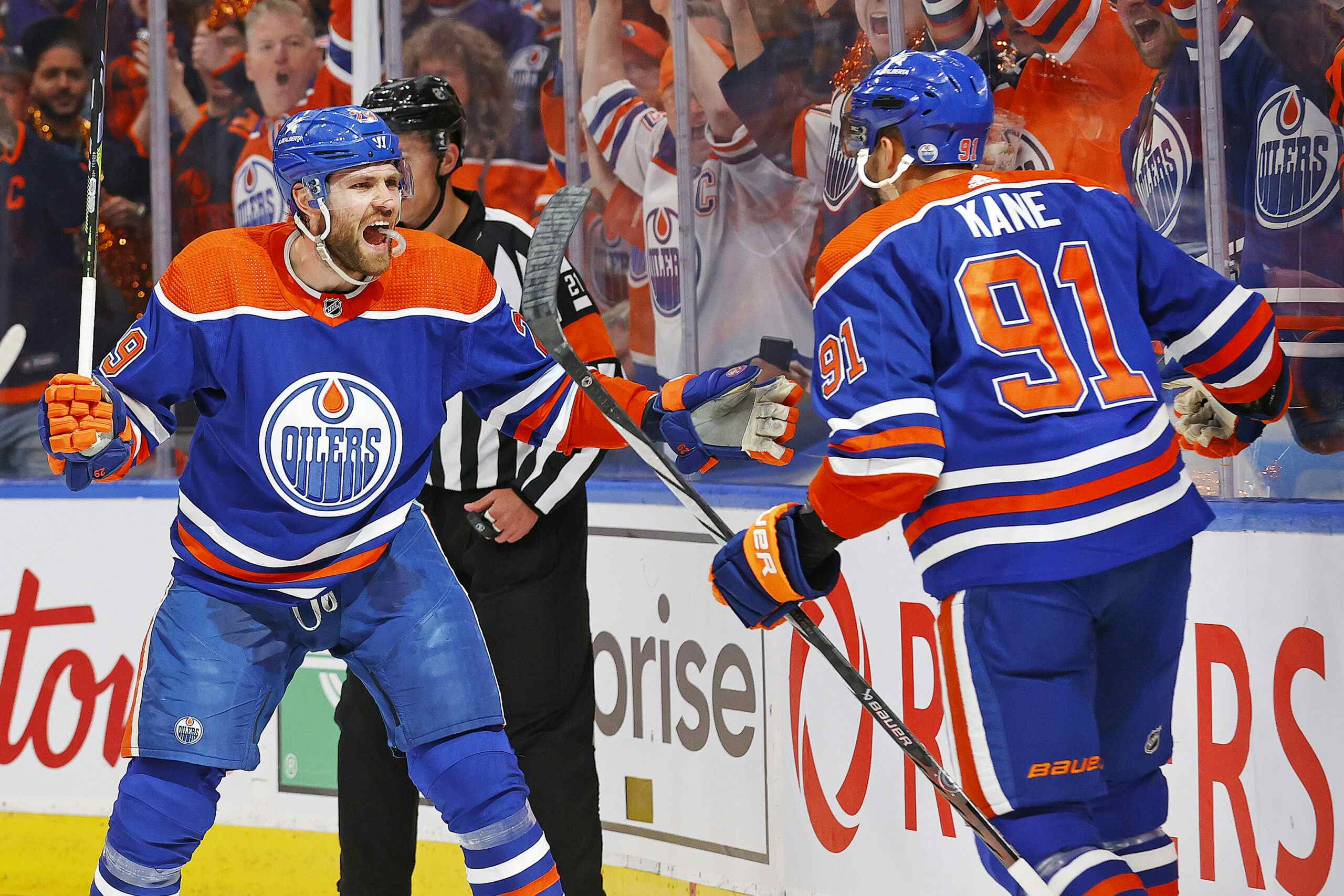Sam Gagner and the rest of the 2007 Draft

Oilers fans have spent a lot of time over the last six years analyzing Sam Gagner. His rookie year set expectations high, but with each passing season without an offensive breakthrough those expectations dipped lower and lower. Now there seems to be a sense that he’s peaked and he’s just going to be a 50-point guy.
From the perspective of fans who have been watching him for six seasons now, that’s understandable. But something very interesting happens when we compare him to other early picks in his draft year.
The Chart

Seven forwards and three defencemen were taken with the first 10 picks of 2007. Of the forwards, six look like decent NHL players; only eighth overall selection Zach Hamill appears to be a bust. The six successful forwards are presented in the chart above, along with a single number: their point production over 82 games in the seasons in question.
There’s a funny pattern to their scoring totals. Five of the six posted their best numbers in the lockout-shortened 2013 season. The exception, Logan Couture, had what was probably the smartest development curve for the non-Kane forwards: two years in junior after being drafted, followed by a third year spent mostly in the AHL with a 25-game NHL cameo. After three seasons developing in developmental leagues (I know, it’s a weird concept) he basically emerged fully formed as an NHL scorer.
The other five all had breakthroughs in 2013. Patrick Kane went from being a point-per-game guy to dominance, James Van Riemsdyk and Kyle Turris both cracked a 50-point pace for the first time, while Gagner and Voracek both took big jumps from the ~50 point range. Voracek’s totals are misleading – a career 10.4 percent shooter, he fired at a 17.1 percent clip this year; if we adjust his goal totals down to his career averages we end up with a 63-point pace (which is where I’d personally project him going forward).
Ryan Smyth & delayed breakthrough

This heading really ought to spotlight Patrick Marleau, but as Smyth was an Oiler and an example of the same sort of development, we’ll use him as our example. Here’s Smyth’s average per-82 game point pace up to age 23:
- Age 19: 19 points
- Age 20: 61 points
- Age 21: 42 points
- Age 22: 36 points
- Age 23: 54 points
- Career up to age 23: 44 points
Smyth’s run had more ups and downs than Gagner’s offensively, but overall he was in the same range, even a little lower. Here’s what happened over the next five seasons:
- Age 24: 70 points
- Age 25: 67 points
- Age 26: 76 points
- Age 27: 59 points
- Age 28: NHL Lockout
- Age 29: 72 points
- Career from age 24 to 29: 69 points
Smyth’s performance after those earlier years jumped significantly, and while that kind of jump isn’t commonplace it isn’t exactly unheard of, either. Gagner’s in pretty decent company through age 23, and while there’s the odd player like Chris Gratton on the whole the group progressed dramatically in their age 24, 25 and 26 seasons from their work up to age 23. Sometimes, as with players like Smyth and Marleau, the jump came after years of stagnation.
Gagner’s jump last season may have been an artifact of a hot start in a lockout-shortened season; that’s a possibility that can’t be ignored. But it would be a significant mistake, in my view, to say ‘this guy has had six NHL seasons and he’s still a 50-point guy so he’s always going to be a 50-point guy.’ There is potential for growth there, there is a possibility that he can maintain what he did this past season (though on a team with Nugent-Hopkins, Gagner’s opportunities and production will always be somewhat limited).
The bottom line is that he’s 23 years old.
Recently around the Nation Network
At Leafs Nation, Steve Dangle continues his popular "Know a Writer" series, this time profiling the Sporting News‘ Jesse Spector. And while Spector talks about the difficulties of breaking into the media, covering hockey and the like, surely the most interesting bit was the fact that he was part of #DregerFace:
Well, we had just come in out of the cold, so I still had my Expos toque on, and Pierre LeBrun took out his phone to take a picture of the scene. I noticed — I’m not sure that Darren Dreger did, you’d have to ask him — and decided to make a ridiculous face because we were in a ridiculous situation. Okay, not because we were in a ridiculous situation, but because I’m a ridiculous person. I was surprised that #DregerFace took off as much as it did, but that speaks to the power of Twitter, and just how desperate every hockey fan was at that time for even a shred of entertainment. Was that really a landmark in my career? Thankfully, I hope to have a lot more of my career in front of me.
Click the link to read more, or alternately, feel free check out some of my other pieces here:
Recent articles from Jonathan Willis





